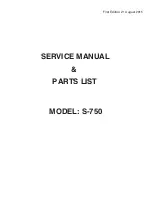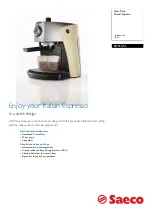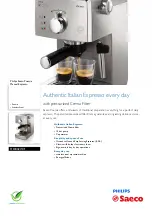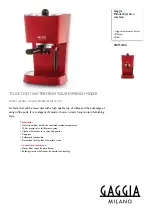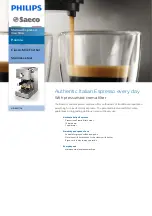
ENGLISH
ENGLISH
INSTALLATION OF BATTERIES & AC/DC ADAPTER (not included):
1.
The battery compartment is on the bottom of the machine. Make sure the
machine is switched “Off”.Using a screwdriver, remove the battery cover and
insert 4 x AA / LR6 1,5V batteries (not included) according to the directions marked
inside the compartment. Close the cover. The machine will be in standby mode.
2.
If you choose to use an AC/DC adapter, it must meet the following specifications:
Output of DC 6.0V 800mA, with a plug outer size of 5.5 mm and inner hole of
2.1 mm and polarity as shown:
The sewing machine works with 4 x 1.5V LR6/AA size batteries (not included) or a
6.0V 800mA adaptor with positive centre
(not included).
Input : 100V - 240V ~ 50 / 60Hz
NOTE! Batteries should be installed by an adult. Remember to po and - correctly. Do not mix old and
new batteries or different types of batteries. Do not attempt to recharge batteries which are not rechargeable.
Remove batteries if the product is not in use for some. Do not short-circuit the battery contacts.
Please keep this information for future reference.
With the machine switched off, insert the plug of the AC/DC adapter into the socket on
the back of the machine.
Note: Batteries must be removed if any AC/DC Adapter is used.
THREADING THE MACHINE:
The surface thread shuttle of the machine has already been threaded. If you want to change the spool, remove
protective cover by removing the screw and bolt with a screwdriver (not included). Pull out the spool pin on the top of
the machine and put the thread spool onto the spool pin. Pull out a length of thread and follow the numbered steps to
correctly thread the machine. Replace the protective cover by tightening the screw and bolt with a screwdriver.
LOADING THE BOBBIN:
1.
Open the bobbin cover plate by pressing the arrow and sliding it away
from the machine.
2.
Place the bobbin with thread of your choice in the bobbin holder,
leaving about 25.5 cm of thread extended out from the bobbin holder.
3.
Turn hand wheel toward you. The needle will go down, picking up the
bobbin thread. Turn hand wheel until needle has descended completely
and then comes up again to its highest raised point. Stop when needle
starts to go down again.
4.
Raise the presser foot lifter and bring the spool thread around to
the front.
5.
Pull it gently up and you will see it has caught the bobbin thread. Pull the
two threads toward the back of the machine (away from you), and lay
them under the presser foot.
6.
Slide the bobbin cover plate back into place.
CLOTH PLACEMENT & SEWING OPERATION:
1.
Turn the hand wheel in the direction of the arrow to life the needle to its highest position.
2.
Raise the presser foot lifter and put the cloth beneath the presser foot.
3.
Lower the presser foot lifter.
4.
Turn the hand wheel 2-3 rotations in the direction of the arrow.
5.
Switch the machine “On” and start sewing.
6.
Change the sewing speed with the speed button.
7.
Switch the machine to the “Off” position when finished sewing. Turn the hand wheel in the direction of the arrows
on wheel until the needle is in its’ highest position. Raise the presser foot lifter and remove the cloth, pulling it
gently backwards and away from the machine.
Note: It is essential that threading bot top and bottom be done properly.
Check carefully and do one practice stitch before beginning to sew. Improper threading will damage the lockstitch.
Note: If the cloth is difficult to take out, you can turn the hand wheel back and froth and gently pull the cloth to
release it.
REQUIRES
4 X 1.5V AA OR LR6
WINDING THREAD ONTO THE BOBBIN:
To change or replace the thread on a bobbin a reel of cotton is needed.
Follow these steps.
1.
Place a spool of the desired thread onto the thread spindle.
2.
The bobbin winder post is recessed in the hand wheel. Press in on the
end and twist to the left to release it.
3.
Place an empty bobbin onto the bobbin winder post, and wrap the end of
the thread onto the bobbin for 4-5 turns.
4.
Switch the power to “On” to start winding the thread, using your finger to
evenly spread it across the bobbin as it wraps. The bobbin is full when the
thread reaches the tops of the small holes.
5.
When finished, swtich the machine to “Off”, cut the thread and remove the
bobbin.
6.
Press the bobbin winder post back into the hand wheel and twist to the
right to lock in place.
NEEDLE REPLACEMENT:
Needle replacement should be done by an adult.
Follow these steps if the needle has been bent or broken and needs to
be changed:
(90/14 household sewing machine needles can be used with this machine).
1.
Switch the machine “Off” and remove the batteries (or unplug the
external power source).
2.
Remove the safety cover by removing the screw and bolt with a
screwdriver.
3.
Loosen the needle clamp screw and pull out the old needle.
4.
Insert the new needle into the needle bar with the flat side facing the
needle clamp screw. Gently push the new needle in as far as it will go.
5.
Tighten the needle clamp screw while holding the needle in place.
6.
Replace the safety cover by securing the screw and bolt with a
screwdriver.
STITCH ADJUSTMENT:
1.
A normal stitch is shown in Figure A. The surface thread and the bottom
thread will have uniform elasticity. If you can’t tell the stitches on a cloth
from a surface thread to a bottom thread, the stitch is normal.
2.
A loose surface thread is shown in Figure B
The bottom thread will be straight and some “knots” may come out.
In this case, you need to screw the thread clamping nut clockwise and
increase the pressure of the surface thread, until the stitches of the
surface thread and bottom thread are even.
3.
A loose bottom thread is shown in Figure C.
The surface thread will be straight and some “knots” may come out.
In this case, you need to screw the thread-clamping nut counter-clockwise
and decrease the pressure of the surface thread, until the stitches of the
surface thread and bottom thread are even.
Note: Use only lightweight or normal weight fabric. Thick of heavyweight
fabric is not recommended and may result in a broken needle.
Note: When adjusting the tightness of the surface thread, watch if the surface
thread has come out from the thread clip. If so, you need to clamp the surface
thread back to the middle of the two thread clamping clips.
Surface Thread
Bottom Thread
Needle Clap
Screw
Needle bar
Tighten
Loosen
Cloth
Non-rechargeable batteries are not to be recharged. Rechargeable batteries are to be removed from the
product before being charged. Rechargeable batteries are only to be charged under adult supervision.
Different types of batteries or new and used batteries are not to be mixed. Only batteries of the same or
equivalent type as recommended are to be used. Batteries are to be inserted with the correct polarity.
Exhausted batteries are to be removed from the product. The supply terminals are not to be short circuit-
ed. Do not throw batteries into a fire. Remove the batteries if you are not going to use the unit for a long
period of time. Battery shall not be exposed to excessive heat such as sunshine, fire or the like.
WARNING: Malfunction or loss of memory may be caused by strong frequency
interference or electrostatic discharge. Should any abnormal function occur, remove
the batteries and insert them again, or unplug the AC adapter from the mains socket
and plug it back in.
Warning: Disconnect the adapter if the game is not used for a long period of time to prevent overheating. When the toy is
powered by an adapter, do not play outside. Check the state of the adapter and the connection cords regularly.
If their condition is deteriorating, do not use the adapter until it has been repaired. The toy shall only be used with a trans-
former for toys. The adapter is not a toy. The machine should be disconnected from the power supply to be cleaned if liq-
uids are used for cleaning. The toy is not intended for children under 3 years old. Misuse of transformer can cause electrical
shock. The toy is not to be connected to more than the recommended number of transformers or power supplies.
Parental advisory: transformer and adaptor for toys are not intended to be used as a toy. The usage must be under
parental advice.
The toy is only to be connected with equipment bearing the following symbol
or
.




















